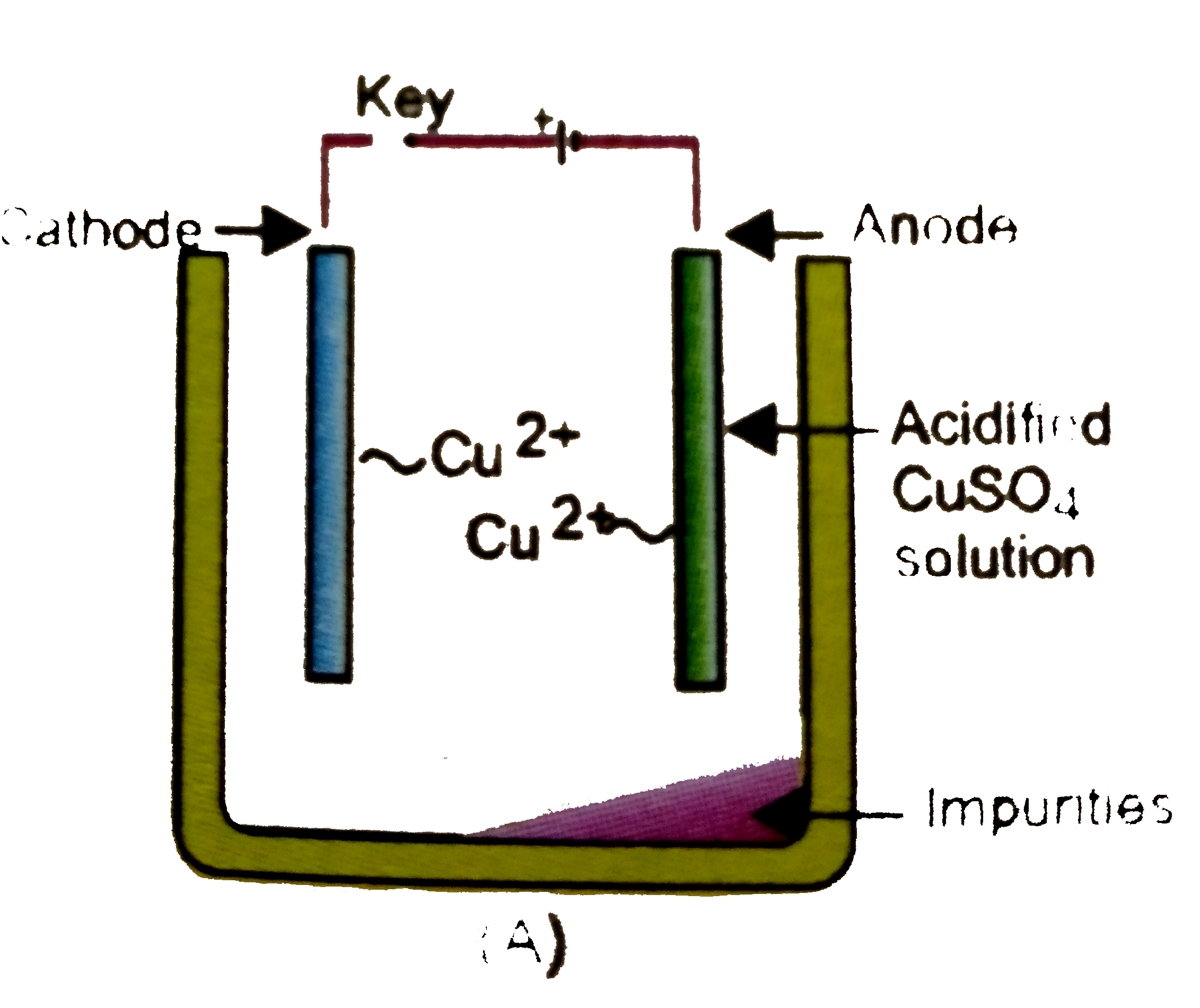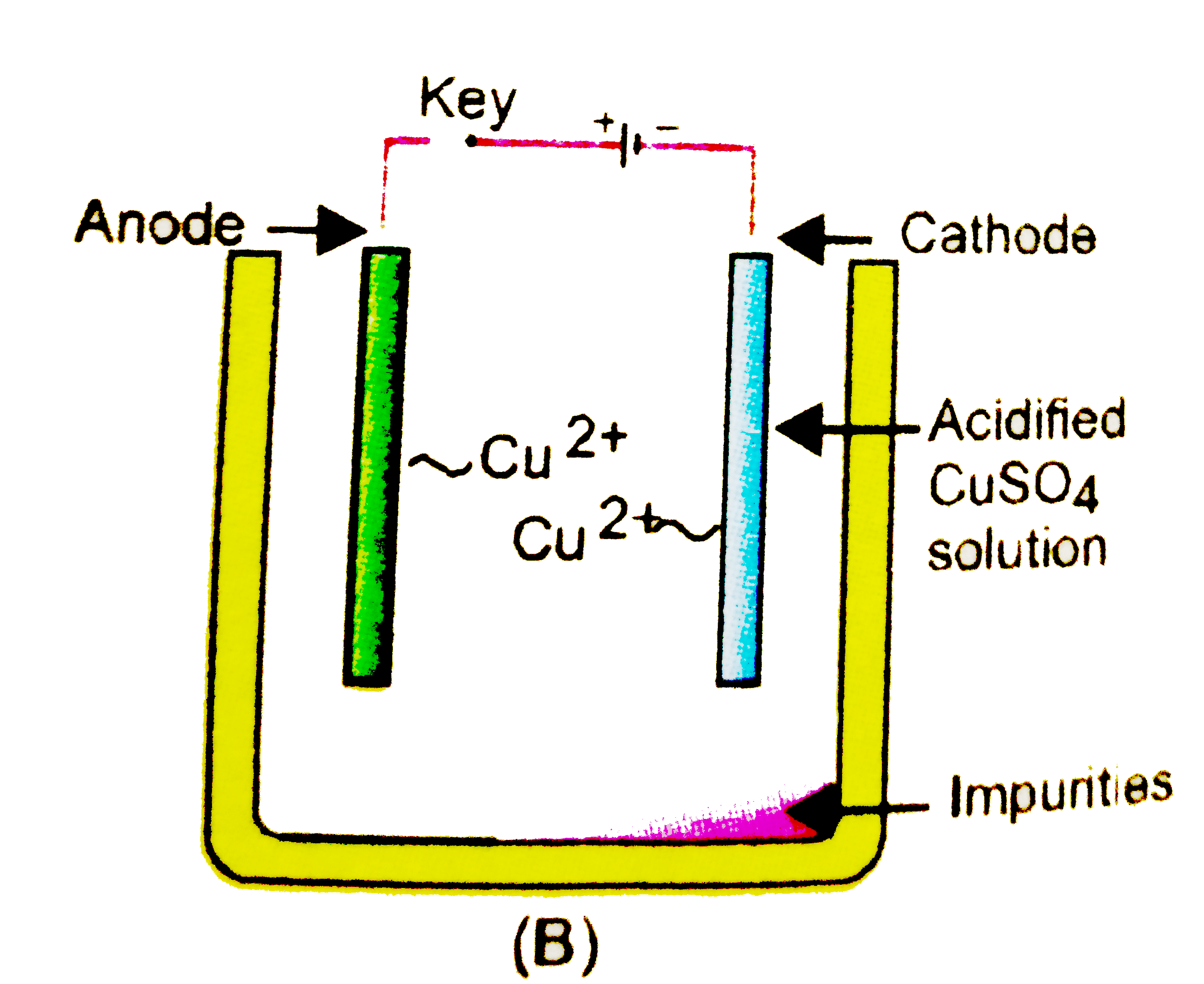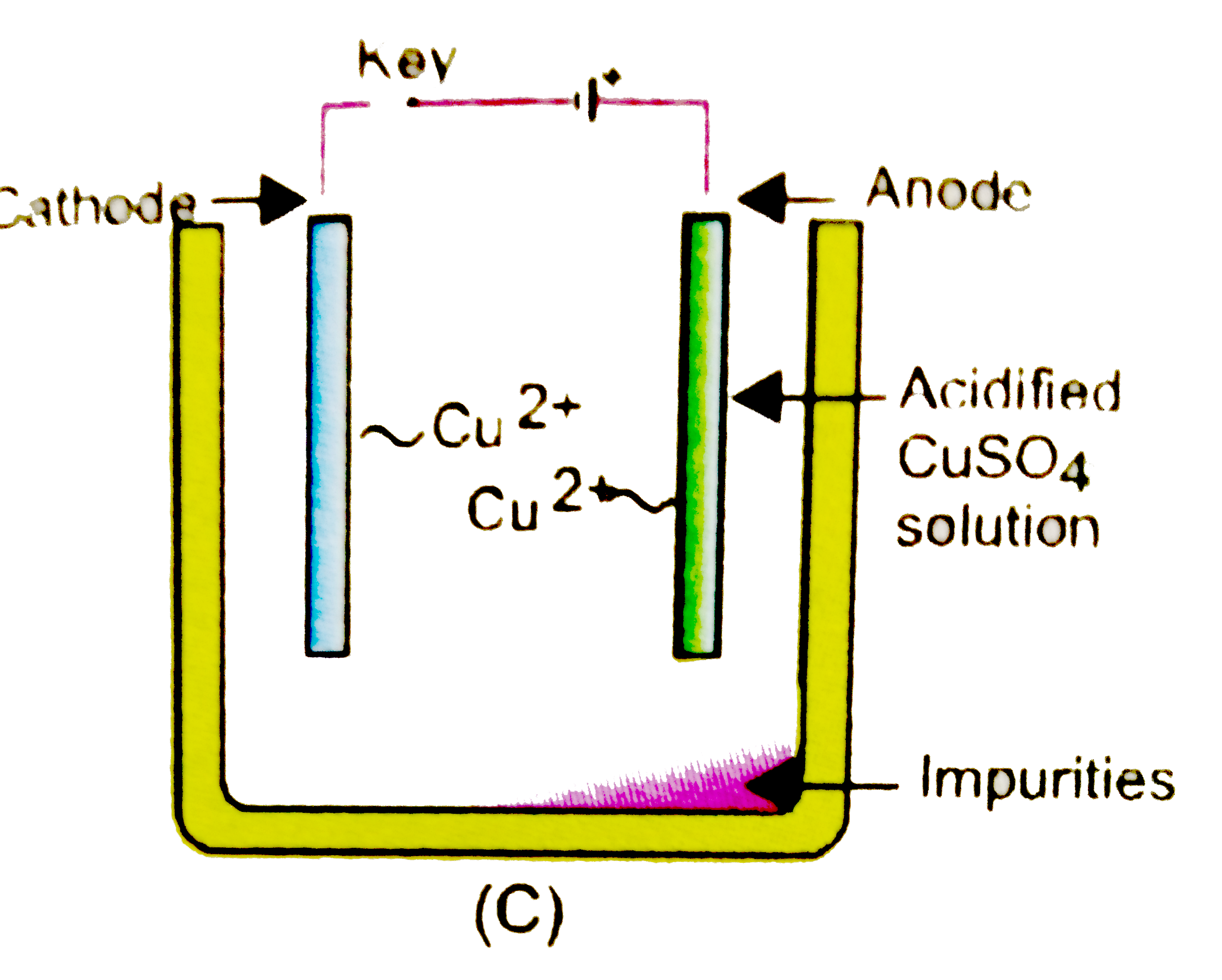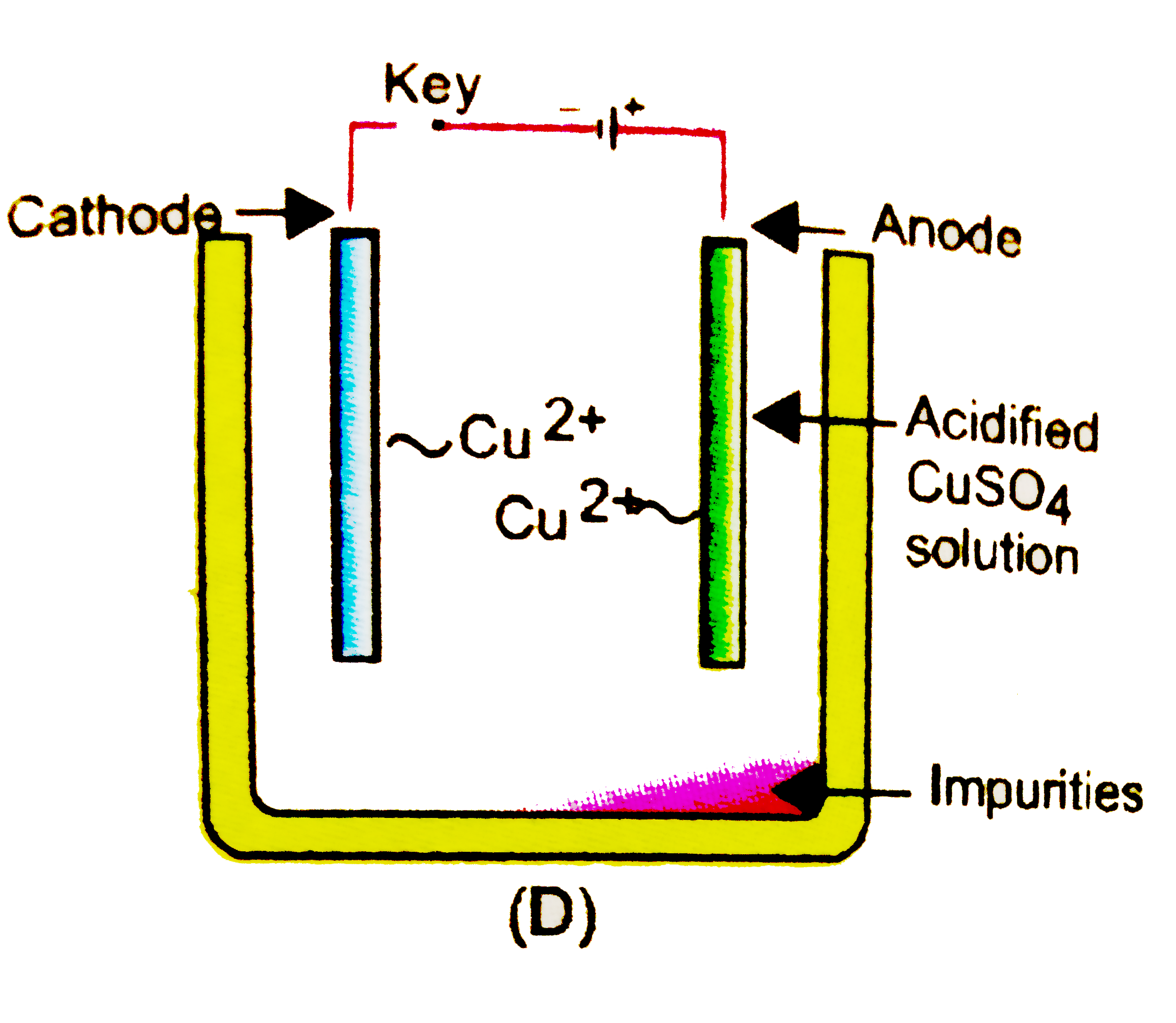Which one of the following Figures correctly describes the process of electrolytic refining?
A

B

C

D

Video Solution
Text Solution
The correct Answer is:C
From electrolyte (CuSO4), upon passing current, Cu2+(aq) ions migrate towards cathode (negative electrode) and are reduced to Cu(s) which is deposited on the electrode. An equivalent amount of copper from avoide (positive electrode) gets oxidised to Cu2+(aq) ions which pass into the solution At anode : Cu2+(aq)+2e−→Cu(s), At anode : Cu(s)→Cu2+(aq)+2e−
The gas burns with a pop sound when a burning match stick is brought near it.
|
Topper's Solved these Questions
- METALS AND NON-METALSBOOK - DINESH PUBLICATIONCHAPTER - METALS AND NON-METALSEXERCISE - HOTS
7 Videos
- CHEMICAL REACTIONS AND EQUATIONS BOOK - DINESH PUBLICATIONCHAPTER - CHEMICAL REACTIONS AND EQUATIONS EXERCISE - Multiple Choice Questions
18 Videos
- PERIODIC CLASSIFICATION OF ELEMENTSBOOK - DINESH PUBLICATIONCHAPTER - PERIODIC CLASSIFICATION OF ELEMENTSEXERCISE - PBQs
28 Videos
Similar Questions
Knowledge Check
Which of the following correctly describes probiotics ?
ACancer- inducing microbesBNew kind of food allergensCLive microbial food supplementsDSafe antibioticsWhich one of the following cellular parts is correctly described
AThylakoids-flattened membranous sacs forming the granna of chloroplastsBCentrioles-sites for active RNA synthesisCRibosomes-those on chloroplasts are larger (80s) while those in the cytoplasm are smaller (70s)DLysosomes-optimally active at a pH of about 8.5Which of the following correctly describes chromatin?
AThe complex of DNA protein from which chromosomes are composed.BThe total genetic content of a cell.CThe proteins that give structural support to a chromosome.DUnpacked DNA
Which one of the following correctly describes the homologous structures ?
View SolutionWhich one of the following cellular parts is correctly described
View SolutionWhich one of the following cellular parts is correctly described
View SolutionWhich one of the following correctly describes the homologous structures?
View SolutionIn the electrolytic refining of Cu
View Solution
